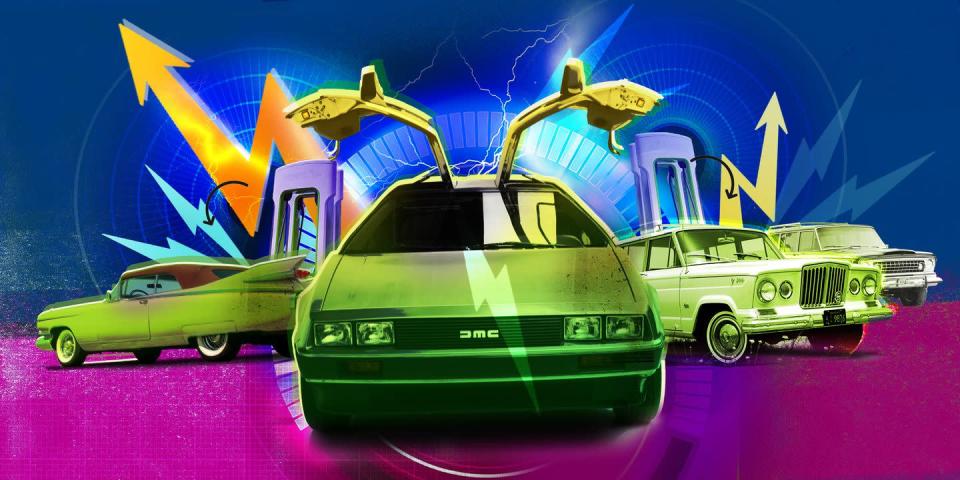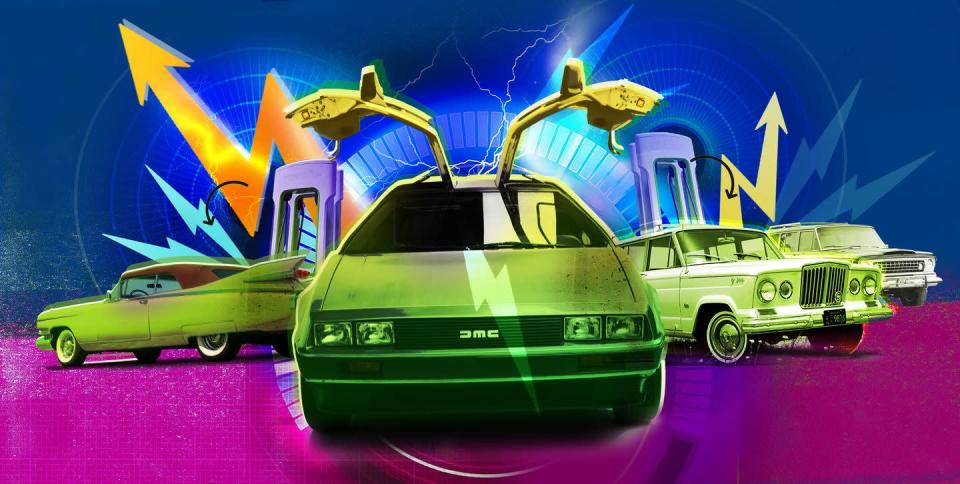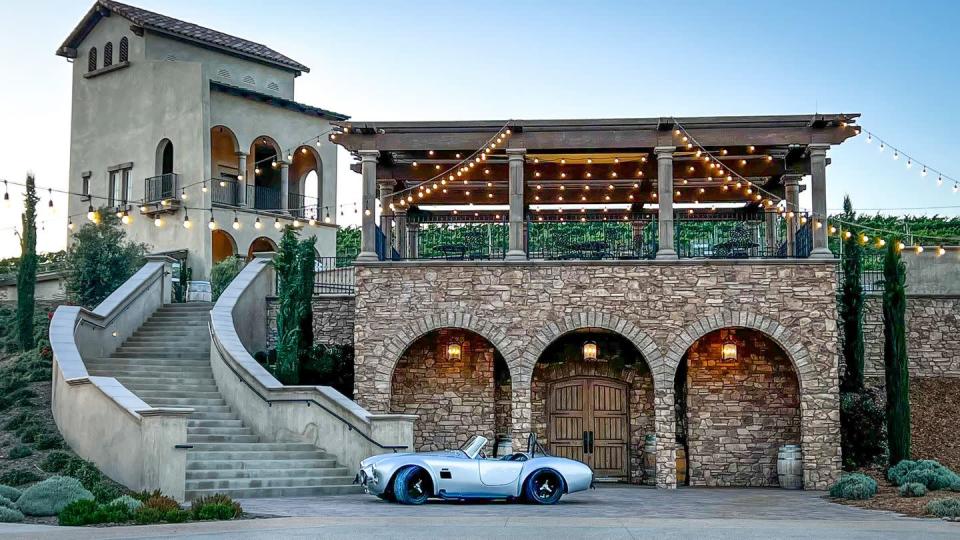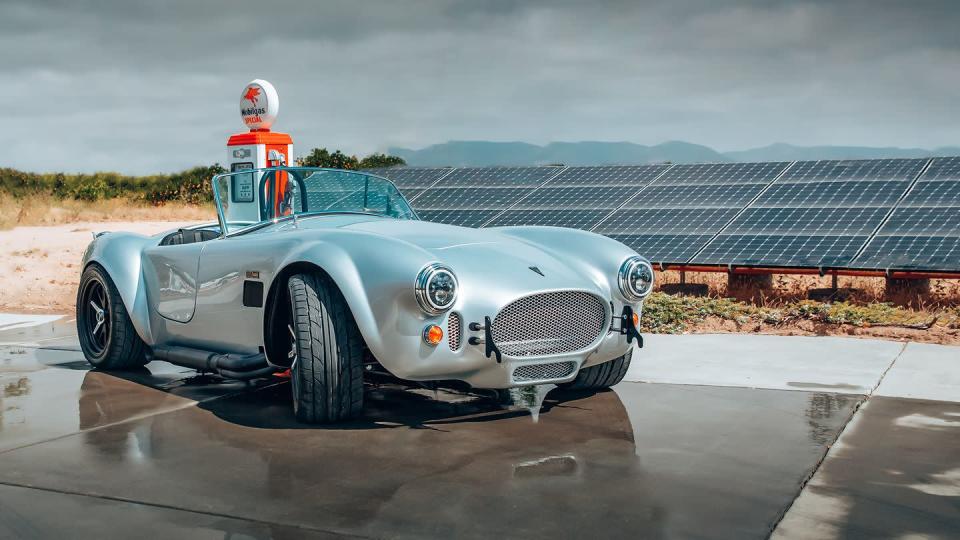

EV conversions of classic cars are hotter than the UK this past August. It seems many people are drawn to the the style and the steel of an old car; the aesthetic that many egg-shaped crossovers can’t match thanks to pesky safety regulations and aerodynamic targets. But, at least in my city, the shine is wearing off on old powertrains. And I get it! Traffic is getting worse and worse. I have a variety of old cars myself, but there are lots of places and times I don’t want to drive them. Heat, the stress of stop and go traffic, not giving the engines a real chance to be used for what they are meant for, the frustration of traffic lights every eighth mile — all are reasons for me to leave the 30-year old Ferrari in the garage and jump in my electric Ford Mach-E, a car that seems optimized for sitting in Los Angeles traffic, with its silent torque band and one-pedal driving system. Why shouldn’t you take the best parts of an EV, the smoothness, the lack of strain on a driveline, and apply that to something a little… prettier?
In my other job as CEO of Westside Collector Car Storage in Playa Vista, CA, I’ve been approached by clients no less than a dozen times over the last six months, inquiring about converting an old car to electric. What kind of power and range would they expect? How much does it cost? Who will do it?
The answers to all these questions vary, but as a general rule, an EV conversion can cost $40,000-$100,000 if you provide an excellent donor car. Based on the popularity of EV hot rodding in CA in 2022, expect to wait six to 12 months before a reputable shop will even touch your car, and then the same six to 12 months again to get the job done. Maybe a bit less if it’s a more commonly swapped car, and maybe more if it’s a unique project.
Most basic setups can provide a reliable 150 miles of range if driven gingerly, but there are a lot of variables, including the size, shape, and weight of the car, and how many batteries can be fit and where. If your basic project car is rusty, or otherwise in rough shape, double the timeline, and double the cost. After all, there is a lot of work to be done even in a best-case scenario. Motors recycled from Teslas can provide anywhere from 300 to 600 horsepower to a single axle, often far, far more than the car left the factory with.

Some companies, such as Temecula’s Scorpion EV, will sell turn key examples of EV-rodded classics, such as the Cobra Replica I’ve just driven on a hot Malibu Monday. It makes 600 horsepower and almost 700 lb-ft of torque to the rear wheels, weighs 2600 pounds, and pairs a reasonably polished, well-programmed, single-speed EV powertrain with a Factory Five Cobra chassis, body, and interior, for $185,000 out the door and a six-week turnaround, painted any color you like. You can adjust the power output up and down on the fly, you can dial the regenerative braking on or off, and it even uses an electronic parking brake. It’s a pretty neat package. It can walk an original Cobra in the quarter mile, and will easily light up the tires at low speeds in a muted burnout. There is an argument that everything about this car is objectively “better” than either an original Shelby Cobra or a well-built replica. But it left me nonplussed, and moderately bored.

Almost all conversions use Tesla powertrains and batteries. Why? Because people crash a LOT of Teslas, meaning the supply of batteries and motors is plentiful. No argument from me – I may criticize a lot of things about Tesla, but their motors work just fine and their batteries (actually supplied by Panasonic, but that doesn’t sound as sexy as “Tesla-Powered”) are better off recycled into an old car than in a landfill. As more OEM’s produce mass market EV’s, we can probably expect a variety of options to become available, depending on a patron’s specific needs.
But here’s the question: Should you bother with an EV conversion at all? Does it give new life to an old sports car? Does it actually improve things? Having now driven a variety of different converted classics, my answer is: “It depends.”
Ask yourself this: How integral to the experience of your classic car is the sound, the feel, and the vibrations of the engine? How integral to the experience is the feeling of commanding a machine? How much of the experience would be sucked away from that car if you removed the mechanical connection between the driver and the road?
Conversely, one might ask yourself: How unimportant are those things? Would the classic car be better if it had no engine at all? Did engineers in period make an attempt to provide as smooth a power band as possible using available tech, but it’s now possible to make it much smoother using electricity? Is it woefully underpowered or too deeply unrefined for use on modern roads?
I think you can see where I’m going with this. There are certain classic cars for which the engine, transmission, and mechanical connection to the road are so integral to the driving experience, that converting one to electric drive should be a crime against automotive humanity. I’m taking about vintage Italian cars (except the classic Fiat 500, an incredibly popular request), Porsche’s, E-Types, things of that sort. The unique configuration, tuning, and setup of the drivelines in those cars, once experienced, can easily be understood to be absolutely integral to the overall driving experience. There is nothing like the rasp of an air-cooled Porsche flat-six, almost literally. Hardly anyone else has ever used a setup like that in a sports car. There is nothing like the wail of a Ferrari V-8 and the snick-snick of a gated shifter.
I’m also talking about classic muscle cars, up to and including (sorry, guys) the aforementioned Scorpion EV with their Shelby Cobras. Muscle cars, with very rare exception, and even the vast majority of Cobras, drive like hot garbage. Objectively, their dynamics are terrible, they handle poorly at the limit, and even those limits are quite low. The pedal spacing is abysmal for heel-toe driving, and they have awful brakes. But the sound of a sloppy, cammed-out, brutal American V-8, especially paired with a roofless body and a side of pipes, is an experience not to be missed. It’s addictive. Swapping out an EV powertrain might make the old muscle car go as quick as you think it was supposed to go, but without the noise, it’s just an old car that can keep pace with a modern Hyundai. It may be more interesting to look at than said Hyundai, but no more interesting to drive.
Other cars are great despite their horrid powertrains. I’m talking about you, Jeep Grand Wagoneer. And you, Volkswagen Microbus. And you, Delorean DMC-12, And you, uh, any Cadillac between 1956 and 1985. The Rolls Corniche, which borrowed three-speed automatics from GM? Yep, you too. Suicide-door Continentals, Aston Martin Lagondas, and a nearly endless list of cool cruisers spanning four decades in the meat of the 20th century can all be piled on there too. Lookers designed to effortlessly glide down the road, but with mediocre-at-best engines.
Any car for which smoothness was attempted, but never really achieved; any car whose engine was stillborn thanks to late-Seventies emissions controls. Any car that looked great, or futuristic, but never offered the performance or the feel it truly promised, could be high up in the runnings for what would work really, really well as an EV.
And yet, so many people, individuals and industrials alike, focus on sports cars. Sure, from time to time an EV conversion may bring a car back from the dead that otherwise might not have been on the road at all, after, say, an engine fire. But frequently these folks think that converting a classic sports car to an EV will improve it, simply by virtue of the fact that the new powertrain makes two or three times the horsepower of the original. But the weight is up, the engagement is down, and the emotional connection that I, as a driver, make to the car is gone. And without a sonorous engine masking the poor NVH (that’s auto industry terminology for Noise, Vibration and Harshness) of the period, you might find yourself with a now-silent car that’s actually quite rattly over bumps, especially if you’ve had to stiffen the suspension to cope with the extra weight of batteries.
Let’s stop this! Let’s pair powertrains with cars where 1+1=3 and not where 1+1=1. There are so many opportunities to improve a whole swath of classics with electricity while leaving the most engaging drivers cars alone – to engage drivers! We have an opportunity to make good choices here. Give me an electric suicide-door Continental with 300 horsepower, 300 torques (low for an EV, high for an old Lincoln) and a 400-mile cruising range, thanks to massive underhood and trunk space for batteries. Give me a 40-year old drop-top Rolls-Royce that goes down the road more quietly than a 2022 Cullinan. Give me a DMC-12 that pulls like a Model 3 and not like a Model T.
Let’s focus all this talent and resources on cars that deserve this type of help, and not deprive future generations of the brilliant mechanical rasp of a small-bore Ferrari V-8 with a gated shifter, or the rhythmic thump of a big-block Cobra. Bring on the EV classics, but let’s use this technology for good and actually improve the cars we’re converting.
You Might Also Like
reference: ca.news.yahoo.com
